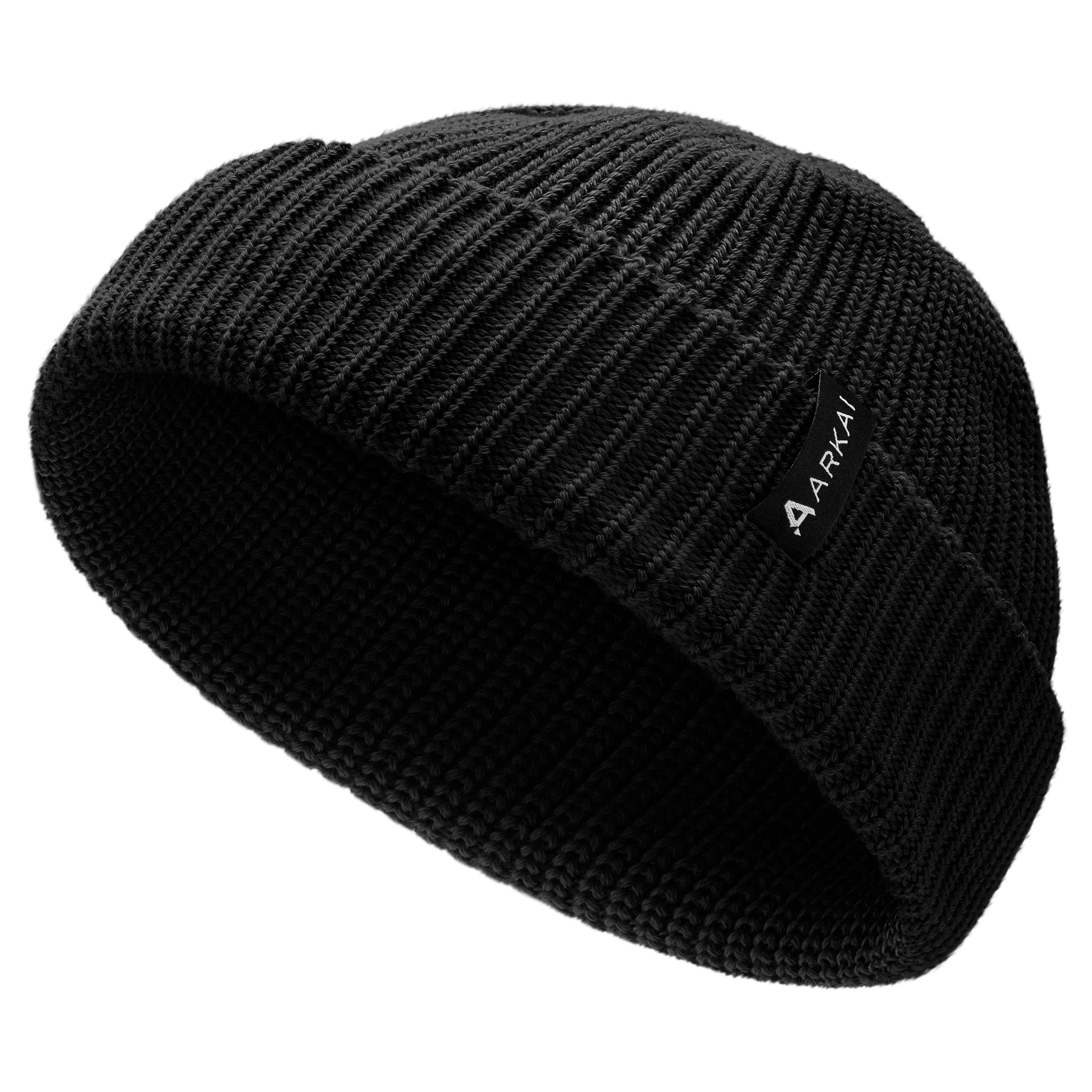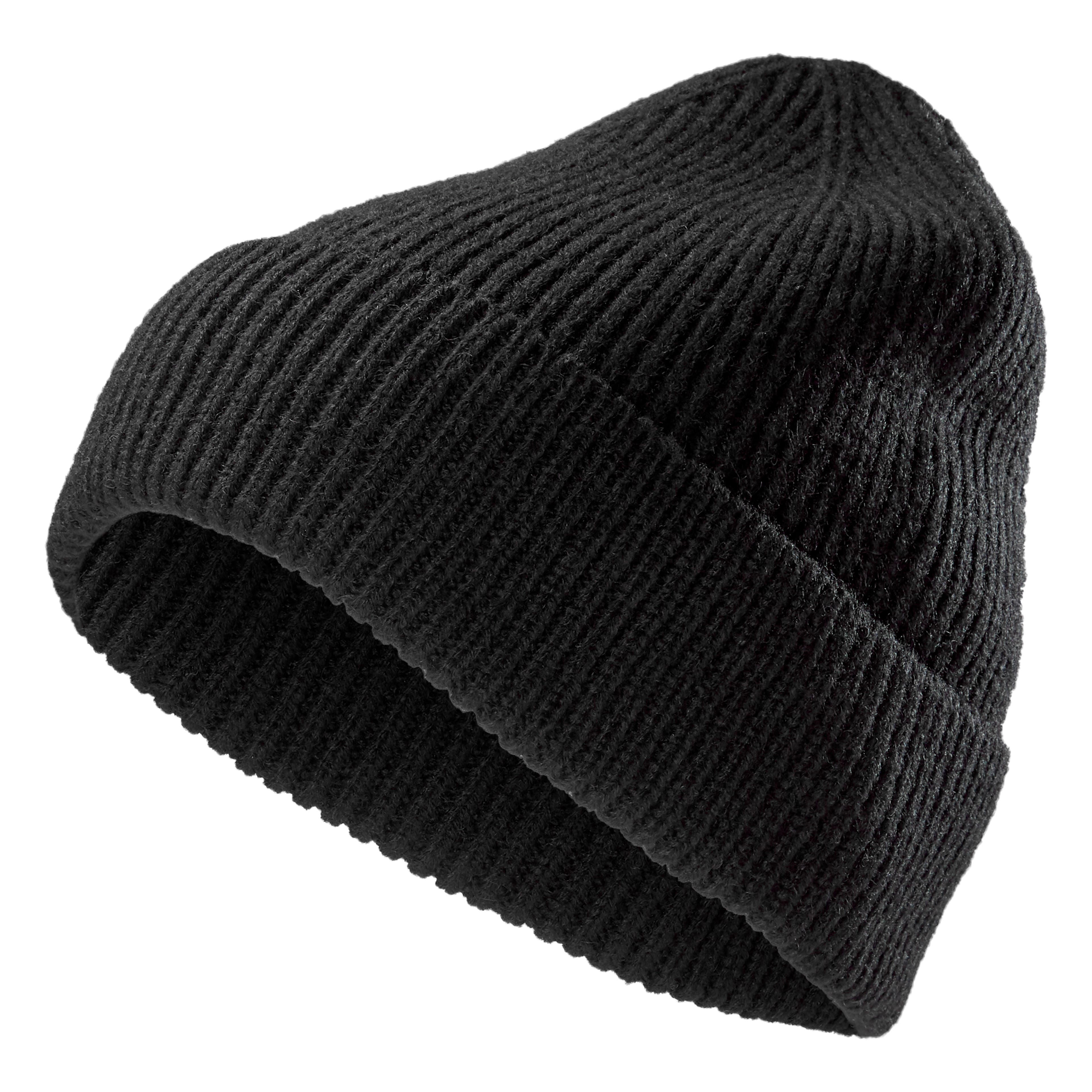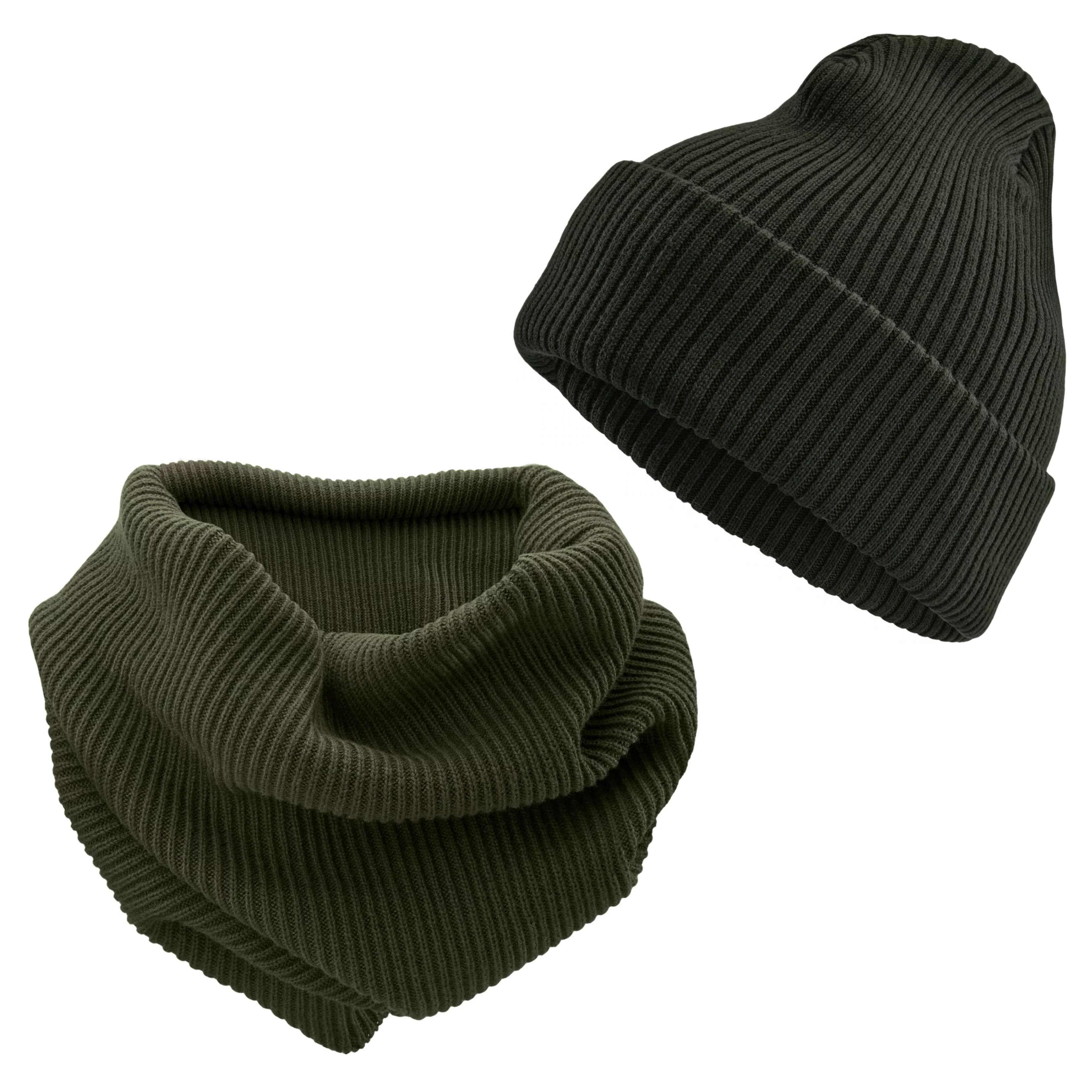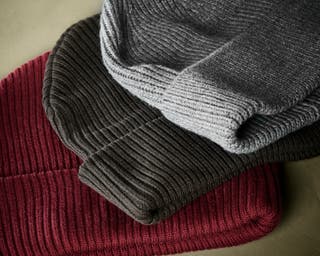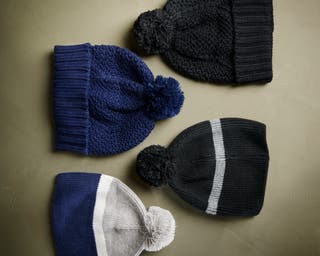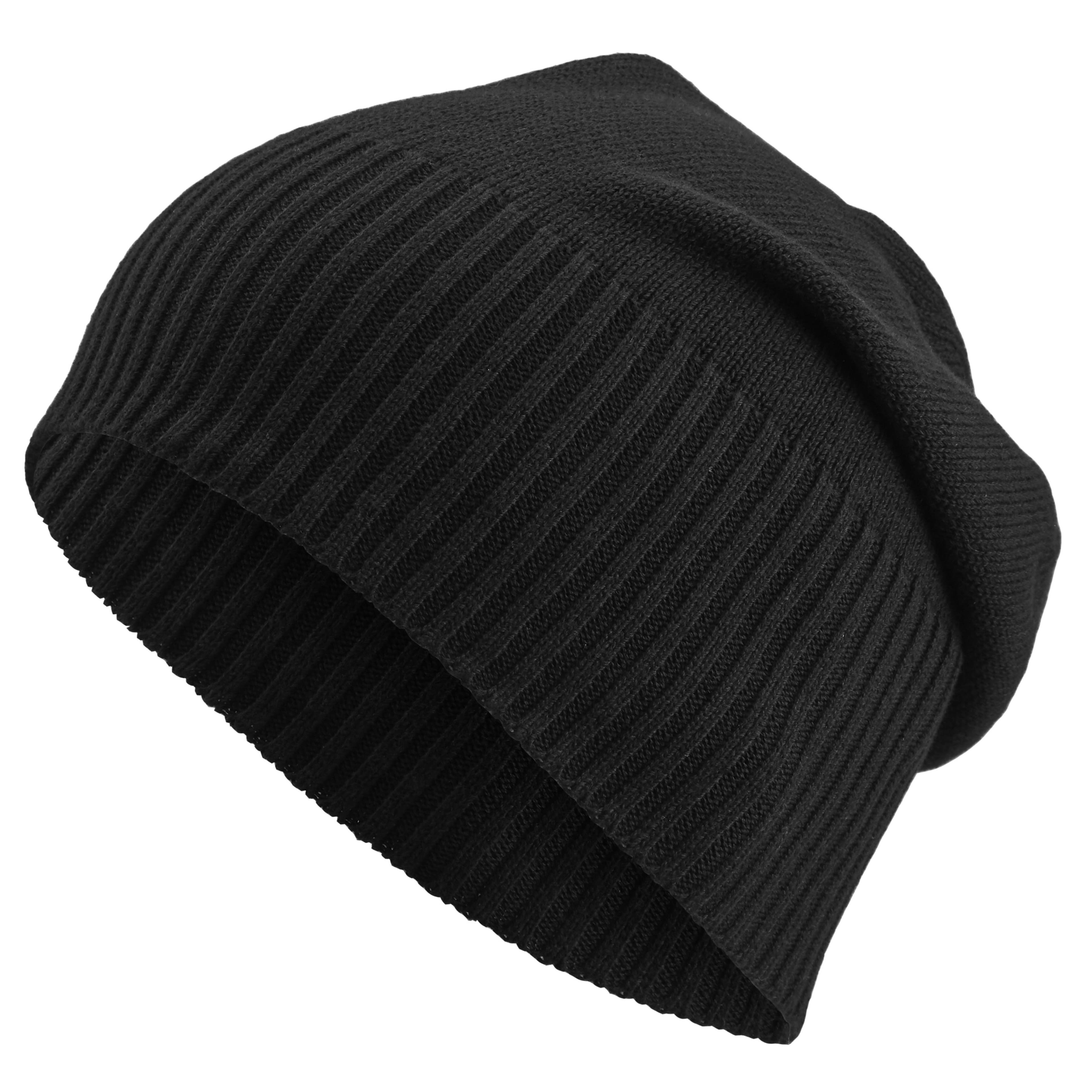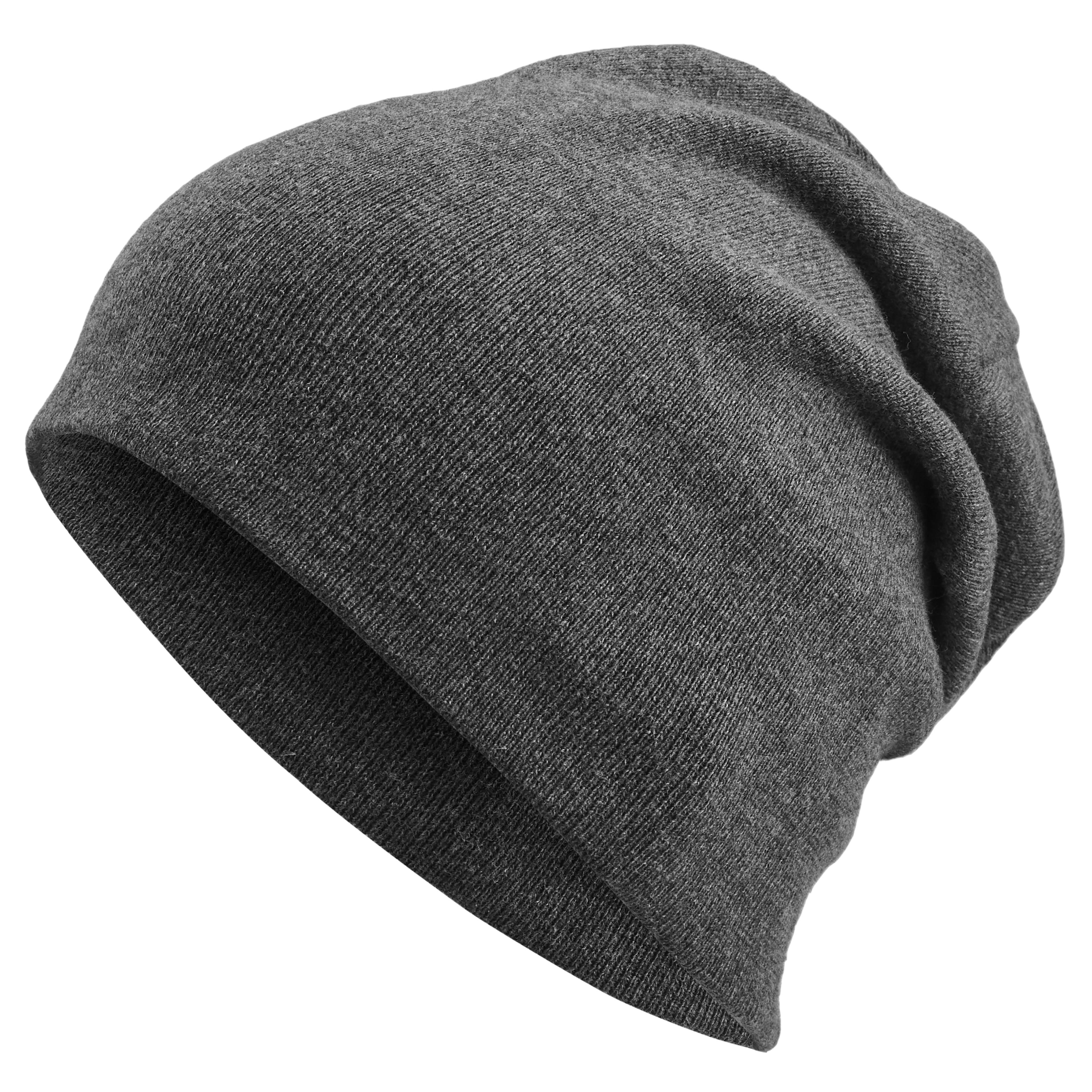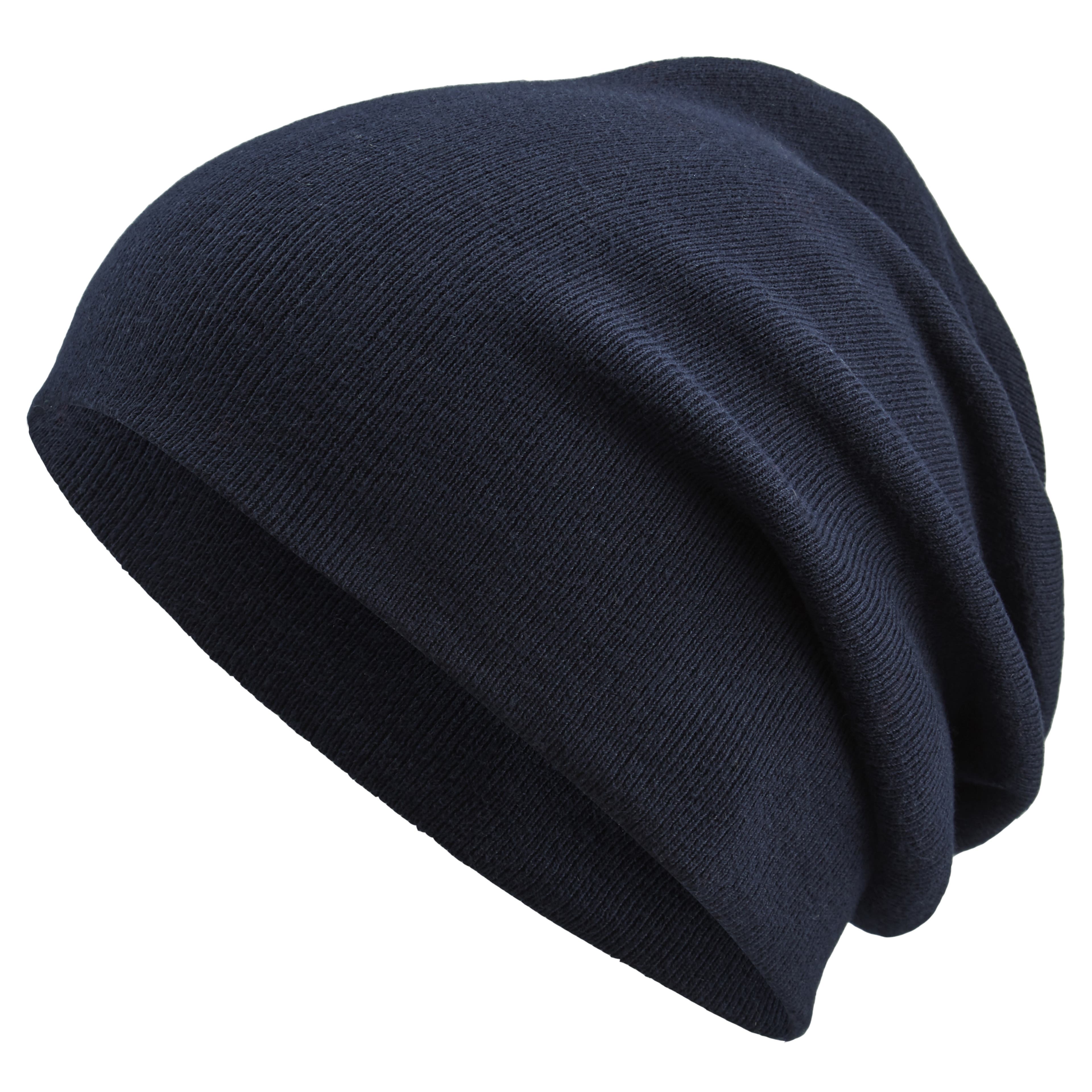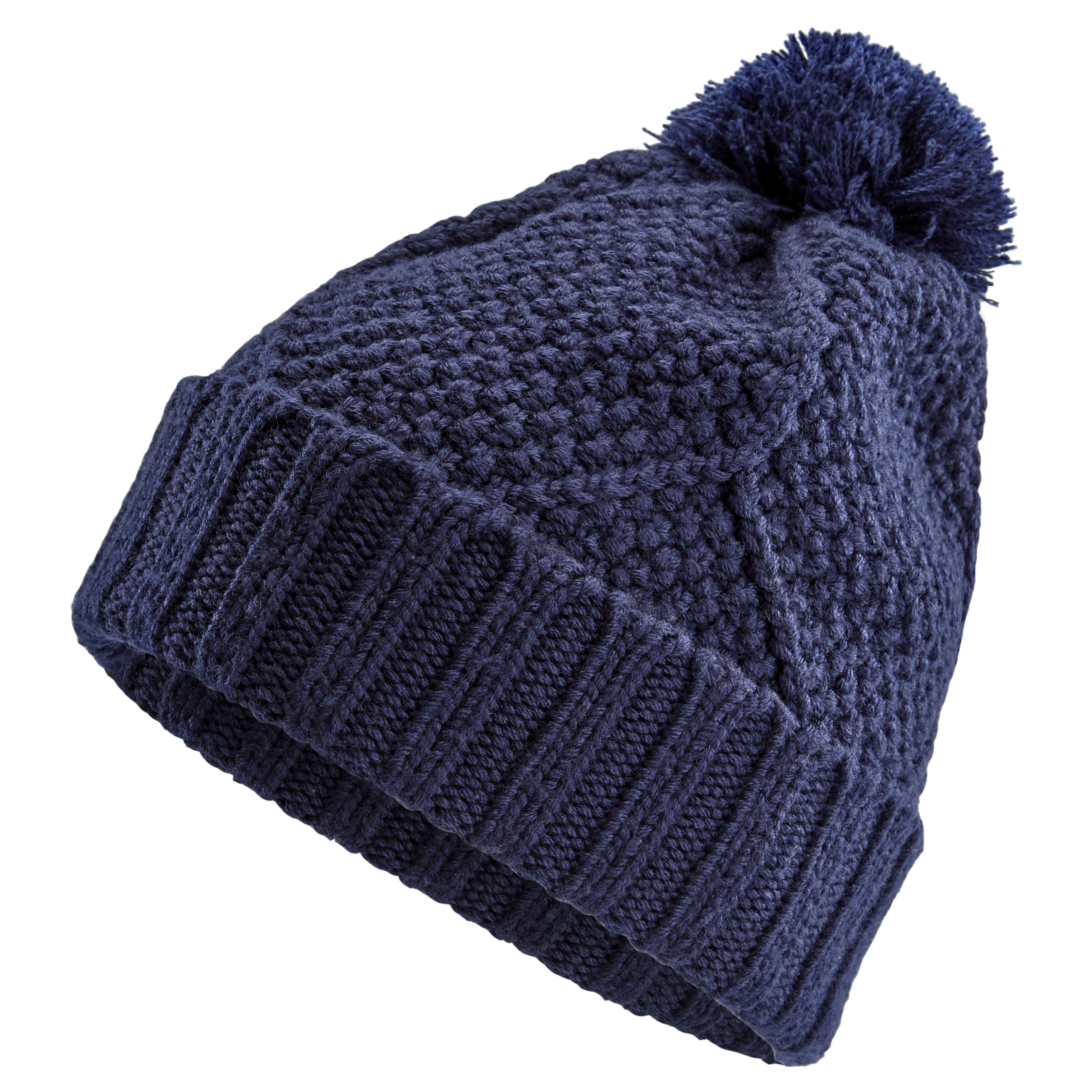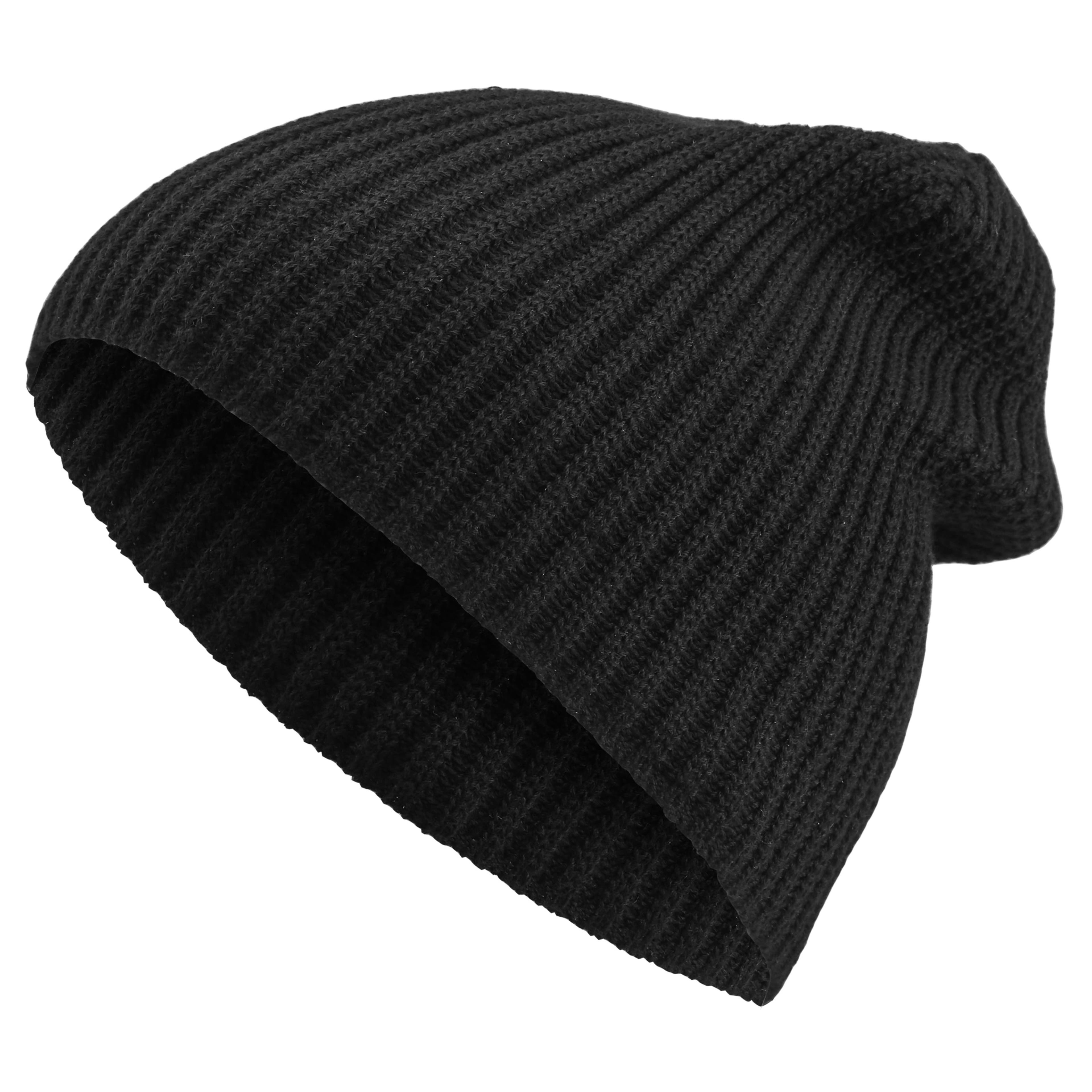How to Wear a Beanie: The Ultimate Guide for Men
There’s more than one way to keep your ears warm and your head protected this winter. Consider this your guide into the world of beanie styles, materials and shopping tips and brave the icy winds in style.
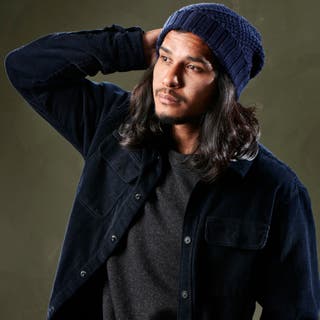
Put on a hat or you’ll freeze to death. If you grew up like we Danes, that’s the first thing your mom said every winter before you left the house. Some went on to claim that you lose 80% of your body heat through your head. While mom’s science might have been off (you’ll only lose around 7-10%), you will feel cosier if your noggin is warm. And who wouldn’t want that?
From their historic connection to the Phrygian Cap worn by freed slaves in ancient Rome, to the liberty caps painted in the US Capitol Building, the beanie is no stranger to the world or winter. And if you thought wearing a beanie high on the head or at a slight angle was a hipster invention. Nope. Thank the WWII veterans and their watch caps for the style trend.
Merino wool, cable knit, pom-poms, fisherman… That’s just the tip of the iceberg. And speaking of ice and freezing temperatures, there’s even such a thing as beanies designed for warmer weather. Mind-blowing, right? Read on for everything you didn’t know you needed to know about men’s beanies and how to find the one to tell your story.
5 Types of Beanies for Men
You may have stuffed your head in whatever winter hat you could find as a kid, but you’re an adult now and have choices. From classic cuffed beanies to ones with pom-poms on top, there’s a type for whatever story you want to tell.
Before settling on your next beanie, take a look at the most popular beanies for men.
1. Cuffed Beanie – Classic and Traditional Beanies
Cuffed beanies are the most classic and traditional style available (think ribbed watch caps in the US Navy or Rocky). And this classic-ness makes them ideal for a weekend out or your work commute.
The cuff around the edge gives double protection to your ears and forehead. Wear the beanie so the cuff covers around half of your ears. When the wind picks up, pull it down for extra heat.
If you’re not sure what colour to get, shop for solid dark colours that’ll match most winter wardrobes.
2. Fisherman Beanies – Short Beanies
Inspired by the woolly hats worn by dock-working fishermen, the fisherman beanie is one of the most popular styles today. This beanie sits on top of your head and, because of its shallow crown, doesn't cover your ears (or maybe just the top of them).
This short beanie has become a favourite of hipsters and fashionable guys everywhere. We can’t promise it’ll keep you super warm… but you’ll look good while freezing.
3. Slouchy Beanies – Baggy Beanies

This beanie hat features a longer style that covers half of your ears (more if you pull it down) and has additional material snuggling down at the back of your head. Usually, slouch beanies do not have a cuff.
The slouchy beanie is designed to be quite relaxed and is better suited for a denim jacket than a work trench coat.
4. Bobble Hats – Pom Pom Beanies
One of the most iconic winter beanies is the bobble hat. These are characterised by a fluffy pom-pom on top. You’ve probably seen these hats everywhere from kindergartens to ski slopes.
The pom-pom has roots in military history and was first used to protect sailors. According to popular theory, this ball on top of the beanie protected sailors’ heads from banging into things. True or not, it’s a good piece of trivia to impress your friends.
Bobble hats are often cuffed and very warm. You can wear bobble beanies with both casual and dressed-up looks, but stick to solid, dark colours with your suit.
5. High Top Beanies
Have you seen one of the most recent trends in beanies for men? The one where guys have a knit cap precariously perched atop their head, daring a gust of wind to blow it off. While it won’t do much for warmth, high top beanies are undoubtedly stylish (and can still hide a bad hair day in a pinch).
High top beanies are constructed with room in the top of the hat and are worn as high on the head as possible without falling off. Make sure the extra material pokes up at the top (a stronger knit will help with this). Otherwise, your beanie may fall to the side and look like a Smurf character.
What’s the Best Material for a Beanie?
From toboggan hats and skull caps to the winter hats that hipsters (and fishermen) wear on the regular, the first step in choosing yours is deciding on the right material.
If you’re after a lightweight beanie for the spring, summer or autumn, you can’t go wrong with an organic cotton beanie. This lightweight material breathes and doesn't hold heat under it.

When temperatures drop, opt for Merino wool for a water-resistant, warm-and-cosy option that’ll keep icy winds and wintery drizzle from ruining your day (and hair). And for real cold-weather protection, get a beanie that covers your ears. While that fisherman beanie you have your eye on is trending on IG, your poor ears will be left begging for cover.
Advantages of Wool Beanies
- Naturally water-resistant
- Naturally moisture-wicking
- Highly insulating (keeps you super warm)
- Durable and high-functioning
- Breathable
- Merino wool is impressively soft and itch-free
Advantages of Acrylic & Synthetic Beanies
- Made from synthetic fibres
- Resistant to abrasion and wrinkles
- Less likely to wrinkle
- Lightweight and quick-drying
Advantages of Cotton Beanies
- Highly breathable
- Keeps you cooler by wicking moisture
- Doesn’t retain odour like oil-based fabrics (Synthetics like acrylic, polyester, nylon and spandex)
- Requires less washing
- Durable
- Less likely (compared to wool beanies) to become saggy or stretch out
- Soft and itch-free
Popular Beanie Features & Construction
A lot of terminology gets tossed around when it comes to beanies – like chunky knit and ribbed cuffs.
Since you’re shopping online for a beanie hat for yourself or as a gift, it’s a good idea to grasp the basic features and construction to understand what you’re looking at.
- Cuff & Brim – These words are often used interchangeably. The cuff or brim on a beanie is the lower part that is often turned up or folded for a desired shape. You see an obvious cuff on a fisherman beanie and the absence of one on most slouchy beanies.
In many men’s beanies, the cuff can be unrolled or adjusted for the fit and look you’re after. Brim can also refer to a visor (like the brim on a
baseball cap). Yes, some men’s beanies actually have that. They were popular in the early 2000s and should stay on the Myspace pages of history. - Reversible – Reversible beanies have a colour or pattern on both sides and can be worn inside out.
- Ribbed – Ribbed beanies have visible vertical stripes from the knitting process.
- Chunky Knit – Think of the watch caps that grandma would make. These are usually considered chunky knits because of the thick yarn, noticeable knit patterns and bulky size.
- Double Knit – Double-knit beanies are made by combining 2 separately knitted fabrics together. They are twice as thick as ‘normal’ knit hats and extra warm.
- Cable Knit – Cable knit beanies are created by a knitting technique that crosses the vertical stripes over each other for a braided pattern. Cable patterns typically result in a dense, warm beanie.
- Ear Flaps – Beanies with ear flaps are knit hats with… ear flaps. The most famous styles include the Sherpa hat and the Russian ushanka. Both have flaps that tie under the chin to keep your ears warm or on top of the head to let your ears breathe.
- Lining – Lined beanies offer a layer of softness and warmth inside the cap. The most common lining is made from fleece (synthetic fibre) and is extremely warm and is great for protecting your head from an itchy wool beanie.

How to Wear a Beanie
Want to know how to wear a beanie? Put it on. While that’s the simple version, we wouldn’t be us if we didn’t offer more than just the obvious. We took a look around our office and broke it down for guys with long hair, short hair, medium-length hair, and curls.
How do men with long hair wear beanies?

For guys with long hair, the best way to wear a beanie is to get a cuffless beanie and wear it high on your forehead. Don’t stuff all your hair under it. Let it hang out on the sides to frame your face (and insulate your neck).
High-top beanies and slouchy beanies also look good on guys blessed with long flowing locks.
What beanie hat looks best on guys with curly hair?

If you have curly hair or medium-length hair, avoid thin, tight beanies like skull caps because you’ll end up with a cap that looks bumpy and bulky. Instead, go for styles like slouch or high-top beanies. These longer shapes won’t squash your curls or flatten your hair (too much).
And even on a bad hair day, don’t hide all of your hair under your beanie. Let it out and frame your face.
How to wear a beanie with short hair?

For all you short-haired guys out there, go for close-fitting beanies over baggy or oversized ones. Anything that’s too slouchy or chunky might make your beanie look like it’s eating your head… not a good look.
Fisherman beanies, bobble hats and classic cuff beanies all work for short hair and won’t overpower your face. These suggestions work for bald guys too – any style of beanie with a tighter fit will work.
How to Shop for a Men’s Beanie
Beyond saving your ears from freezing off, the right knit hat can do wonders for your overall look and style. Step one is to decide if you want a beanie that’ll keep you warm or one that you can rock in the spring and summer. After that, getting the right one is as easy as knowing what you like.
We've narrowed it down to the basics below. As with all accessories, we 100% support your decision to ignore these, do you, and tell your story. But… as far as easy-to-follow tips go, these are good ones.
- Formal & Office Wear – Traditional cuffed beanie
- Casual & Weekend Looks – Cuffed or not cuffed beanie or fisherman beanie
- Streetwear & Sporty Outfits – Slouchy beanie, fisherman beanie or bobble hat
And if you’re focused on getting warm and looking stylish, don’t forget the importance of a winter scarf and sunglasses. There’s no need to freeze for style.

You Asked – We Answered
Can you go bald wearing a beanie?
While we’re not scientists, we can say that wearing a beanie (or any hat) probably won’t make you go bald faster than you already are. There is something called traction alopecia that happens when the hair is pulled too tightly. Or friction alopecia that comes from wearing a hat so tightly that it breaks the hair follicles. Both of these are unlikely with a beanie and most often occur over long periods.
Smoking, poor nutrition and DNA are more to blame for balding than the slouchy beanie you have on.
Can you wear beanies with glasses?
If it’s a choice between seeing and not seeing… 100% yes, wear your glasses with your beanie. If you’re going for a pair of transparent glasses or sunglasses, the answer is still the same – yes, wear them with your beanie.
For style, go for a darker coloured beanie like black, navy or grey. These colours won’t draw as much attention and will let your glasses do their job of highlighting your handsome face.
What is a Monmouth cap?
The Monmouth cap is a grandfather of today’s beanies for men. These caps were first created and used by sailors and soldiers in 14th century England in the town of Monmouth (ergo the name). In an attempt to protect domestically-produced products, Elizabeth I ruled that anyone over 6 years old had to wear the cap. Well, that’s one way to start a trend.
Can I stretch a beanie to make it fit my head?
Afraid your eyes will pop out like Jim Carrey’s in The Mask? If your beanie feels that tight, you may want to consider stretching it. For most people, wearing the beanie over time will slowly stretch the fabric and make it more comfortable. If that’s not working, you can hand-wash your beanie and then stretch it while it’s drying (when the material is damp).
Our best advice is to check the size of your beanie before pressing ‘buy’.
Can I shrink a beanie to make it fit better?
If your beanie is too big for your head, we suggest returning it and finding one that fits properly. Shrinking a beanie is a delicate process and you could end up with a doll-sized beanie after all your effort. If you absolutely must shrink your beanie, try hand-washing it with hot water.
What kinds of winter hats are great for men?
For the winter, we suggest guys stay warm with wool fedoras, wool beanies, or woolen flat caps. Wool is great for keeping you toasty and not trapping sweat. Beanies are ideal for really cold and windy weather because they cover your ears… unless you get a fisherman beanie.
What is the Hebrew name of the beanies that Jews wear?
In many Jewish communities, kippahs are worn as a sign of reverence for God. These skullcaps are not categorised as beanies and should be referred to by their proper name.
What is a Skull Cap Beanie?
If you’re looking for a cap that blends the comfort of a beanie with the tight fit of a skull cap, may we introduce you to the skull cap beanie. Super clever name, eh?
Skull cap beanies hug snuggly around your dome and usually have no brim or cuff. Some are thin enough to fit under a bike helmet and are popular with motorcycle enthusiasts.
Why is it called a beanie?
We scoured the internet for answers and got nothing concrete. Our favourite conclusion is that the knit hat got its name from the slang word for head, ‘bean’. It does sound better than calling it a ‘headie’.
What is a Whoopee cap?
Whoopee caps originally began life as fedoras. From these felt hats, the brim was cut, scalloped and turned up for a cap that resembles a fisherman beanie… but isn’t. If you’re a fan of old TV shows, check out Goober Pyle for style tips or stick with Riverdale’s modern version.
Speaking of Whoopee caps, what are some other names for beanies?
Depending on where you’re from, you’ll hear men’s beanies referred to as knitted caps, woolly hats, sock hats, wool hats (if they’re made of wool), stocking caps, skullcaps, ski hats, watch caps, skullies and even Snookie caps.
Want more? How about Benny Hats, serkups, toques (Hello, Canada), tossle caps and toboggans. Just stick with beanie. And get yours here.

